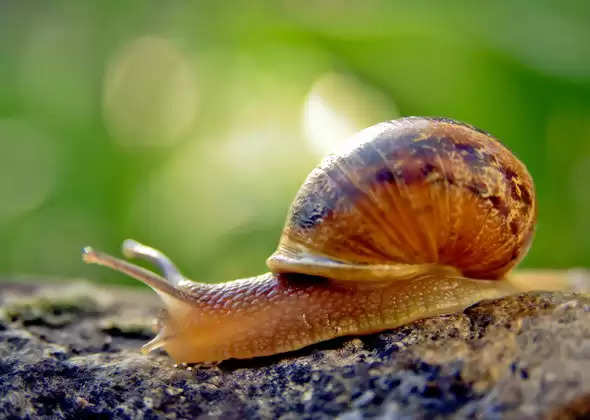Top 8 Slowest Animals In The World In 2023

Nature is home to a diverse range of species, each with its own unique set of characteristics. While some animals showcase incredible speed and agility, others have evolved to move at a more leisurely pace. In this article, we will explore the top eight slowest animals in the world as of 2023, highlighting their fascinating adaptations and behaviors that allow them to thrive in their respective environments.

- Three-Toed Sloth (Bradypus spp.):
Renowned for its sluggish movements, the three-toed sloth tops the list of slowest animals. Found in the rainforests of Central and South America, these adorable creatures spend most of their lives hanging upside down from tree branches. Their slow metabolism and low muscle density contribute to their relaxed pace, enabling them to conserve energy while seeking their diet of leaves.
- Garden Snail (Helix aspersa):
Known for its remarkable shell, the garden snail is one of the slowest creatures on land. Its slimy mucus trail helps reduce friction as it glides along, but its leisurely pace is due to a lack of muscle strength. The garden snail is a nocturnal herbivore, consuming plants and vegetables in gardens, hence its common name.
- Star-Nosed Mole (Condylura cristata):
Despite living underground, the star-nosed mole is not known for its speed. It is a small, burrowing mammal found in the wetlands of eastern North America. The star-shaped appendage on its snout helps it navigate through tunnels and locate prey, primarily insects, but its overall movement remains unhurried.
- Koala (Phascolarctos cinereus):
The koala, native to Australia, spends most of its life in eucalyptus trees. This marsupial's slow movements are a result of its low-calorie diet, consisting mainly of eucalyptus leaves. Koalas have a sedentary lifestyle and conserve energy by sleeping for up to 20 hours a day.
- Giant Tortoise (Geochelone spp.):
These massive reptiles inhabit islands in the Galápagos and Seychelles, among other locations. Giant tortoises are known for their impressive longevity, and their slow movements are a reflection of their relaxed lifestyle. These herbivorous giants wander leisurely in search of vegetation, grazing as they go.
- Loris (Nycticebus spp.):
Lorises, found in tropical forests of Southeast Asia and parts of India, are small, nocturnal primates. Their slow movements aid in blending with their surroundings, ensuring their survival in the dense foliage. Lorises have a specialized ability to cling to branches, allowing them to move with precision and deliberation.
- Seahorse (Hippocampus spp.):
Although not renowned for their mobility, seahorses possess extraordinary adaptations for life in the water. Their small fins and unique body structure limit their speed, as they rely on their prehensile tails to anchor themselves to vegetation. Seahorses exhibit slow and deliberate movements, making them fascinating creatures to observe.
- Sloth Bear (Melursus ursinus):
The sloth bear, native to the Indian subcontinent, exhibits a slow, shuffling gait. Despite their name, these bears are not related to sloths but are named so due to their similar habits. They possess long, curved claws that help them dig for insects and honey, and their sluggishness aids in their hunting strategy of surprising their prey.
Conclusion:
In a world filled with animals that showcase incredible speed and agility, it is intriguing to explore the slower side of nature. The eight animals mentioned above have evolved various adaptations that allow them to thrive at their own pace, highlighting the diversity of life on Earth. While their slowness may seem disadvantageous, these animals have found their niche and continue to captivate us with their unique behaviors and characteristics.



